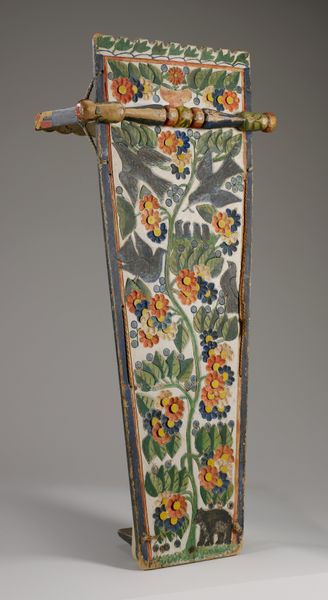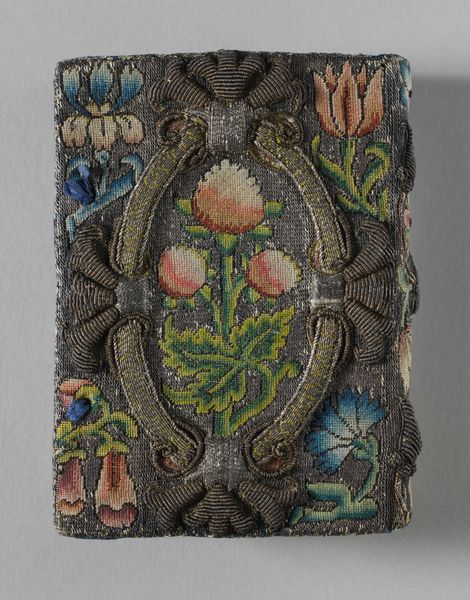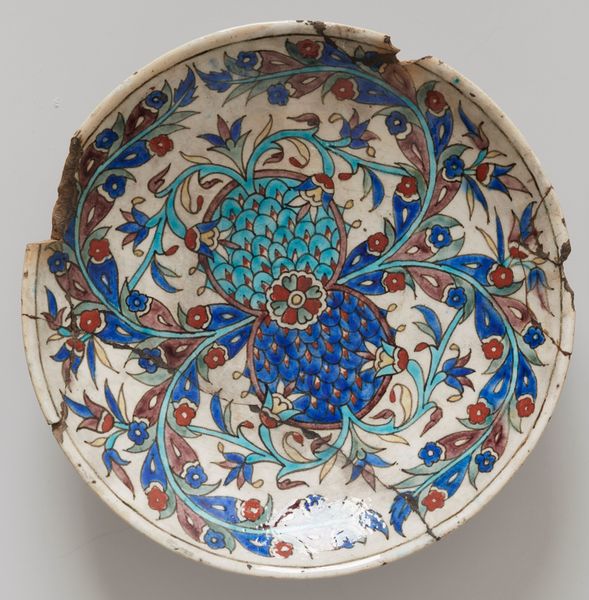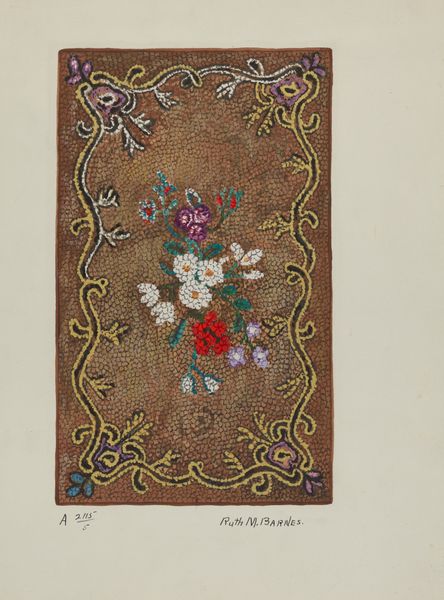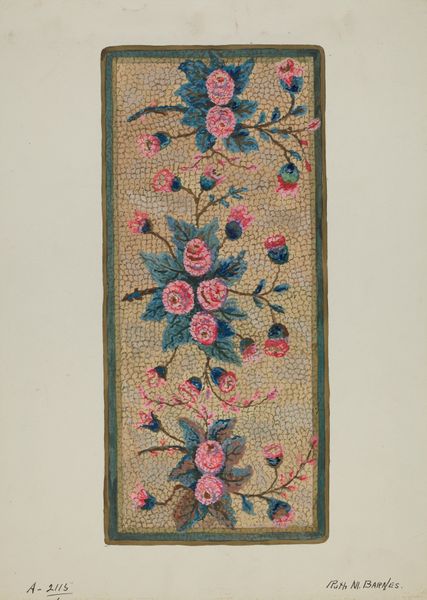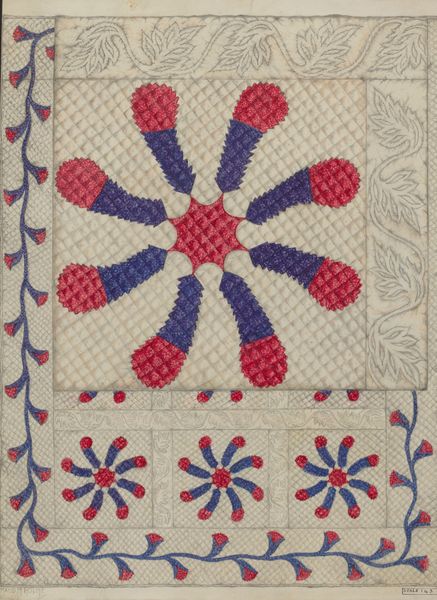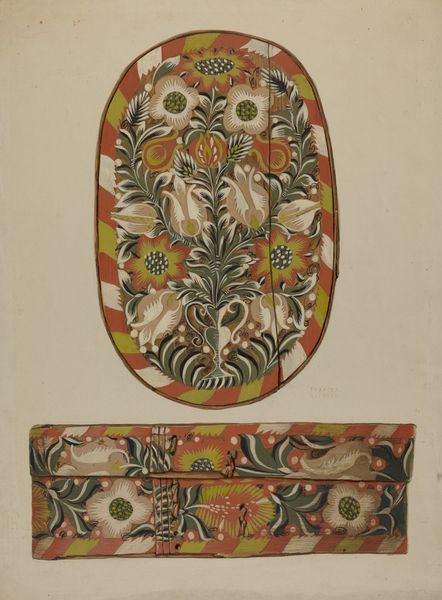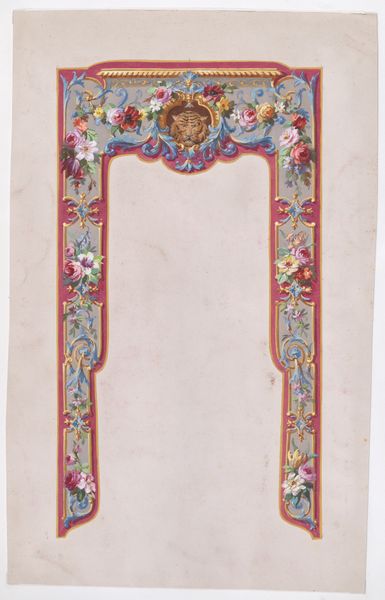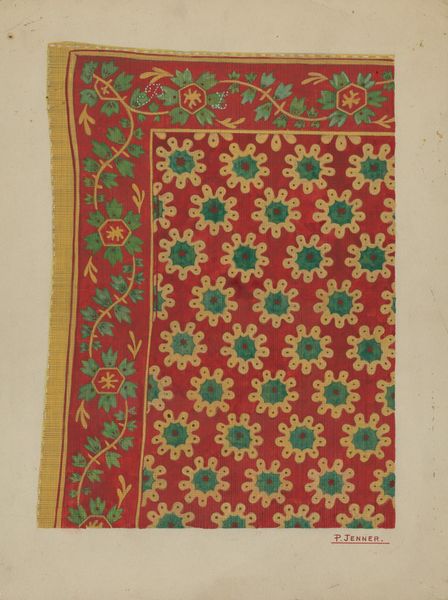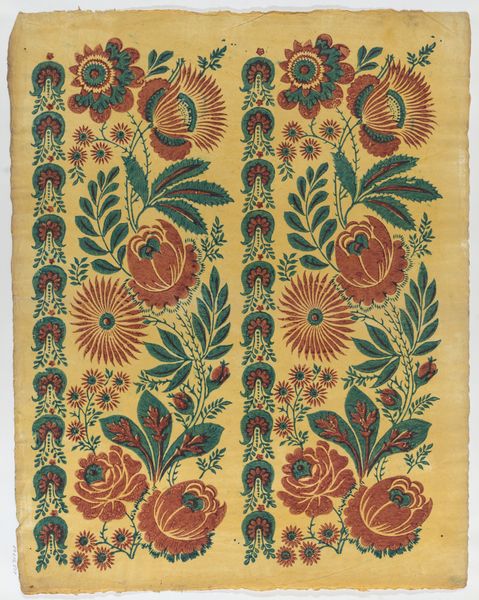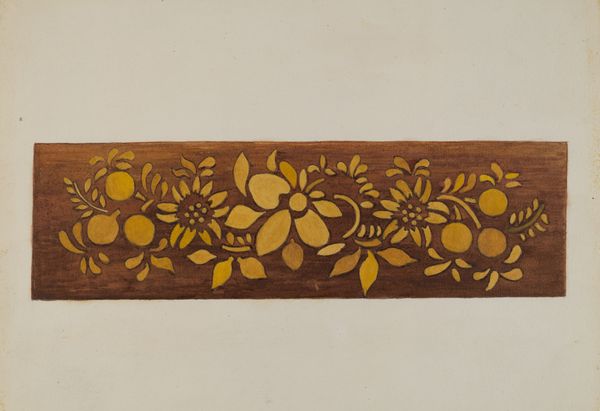
ceramic, earthenware
#
decorative element
#
ceramic
#
earthenware
#
geometric
#
islamic-art
#
decorative-art
#
layered pattern
#
decorative art
Dimensions: 11 1/2 x 6 1/4 in. (29.21 x 15.88 cm)
Copyright: Public Domain
This tile fragment features a vibrant display of floral motifs, rendered in a palette of red, white, and blue. These botanical elements, especially the stylized carnations and tulips, are not merely decorative; they are symbolic carriers of meaning within the Ottoman cultural context. These motifs echo through time, appearing on textiles and ceramics across various cultures. The tulip, for instance, originated in the Ottoman Empire and later became a symbol of wealth and status in the Dutch Golden Age, triggering a speculative frenzy known as "Tulip Mania." This "mania" reveals how a simple flower can become imbued with collective desires and anxieties. Such symbols demonstrate the cyclical, non-linear progression of cultural memory. The continuous reappearance and evolution of the floral motifs remind us that images do not exist in isolation but are part of a larger, ever-changing cultural landscape.
Comments
No comments
Be the first to comment and join the conversation on the ultimate creative platform.
